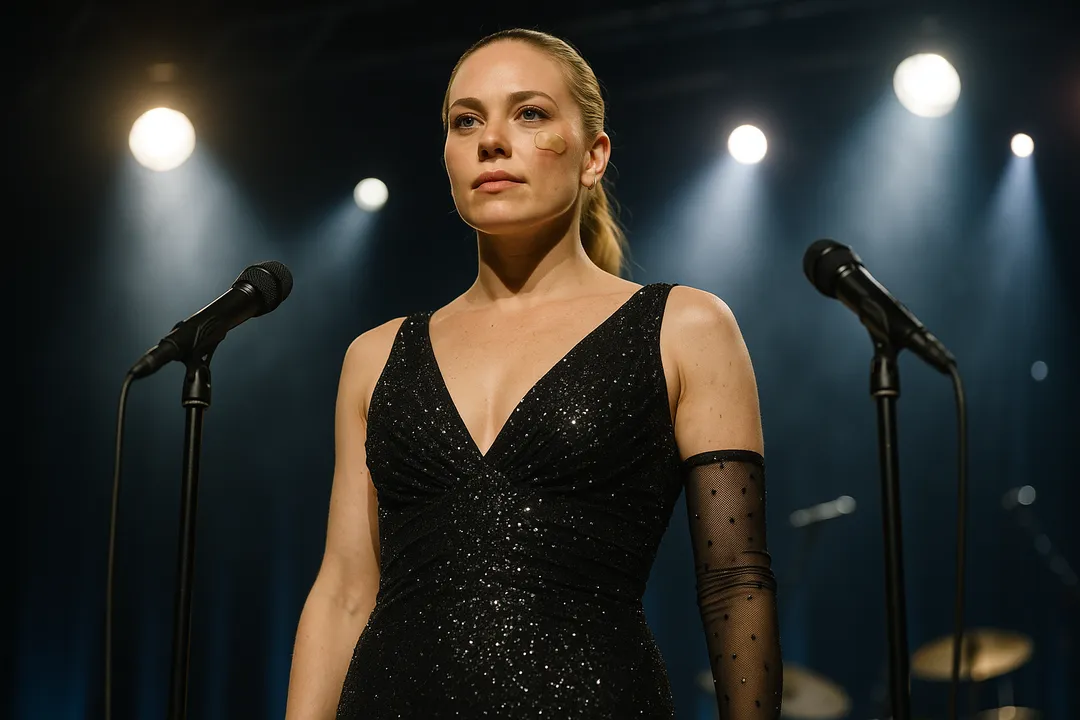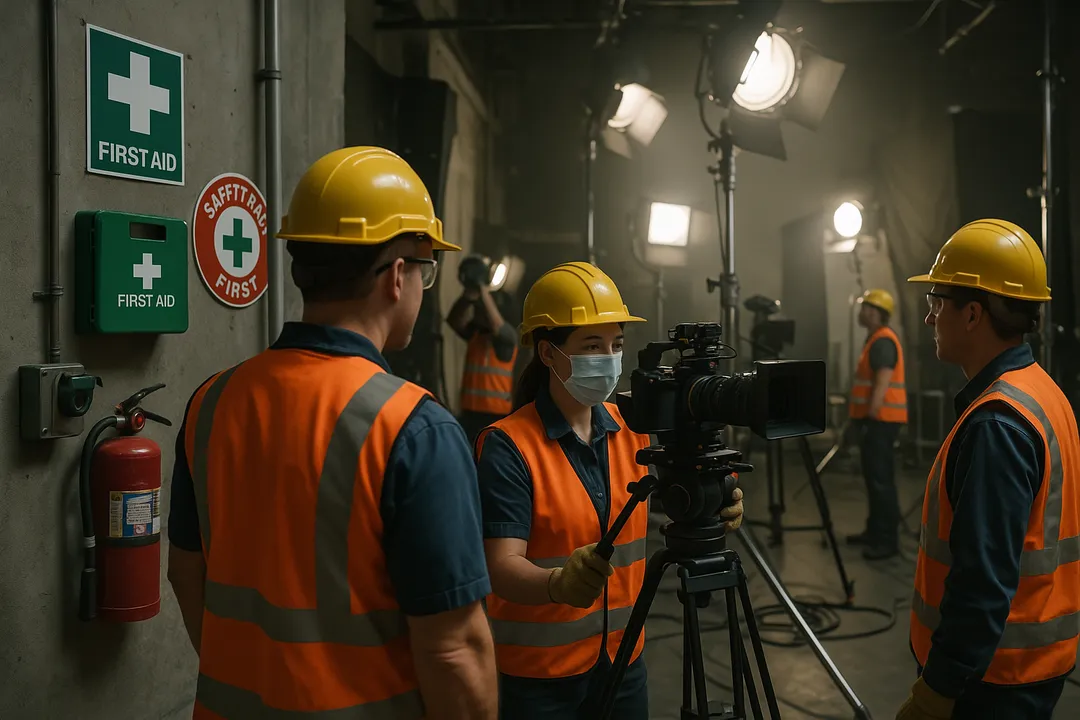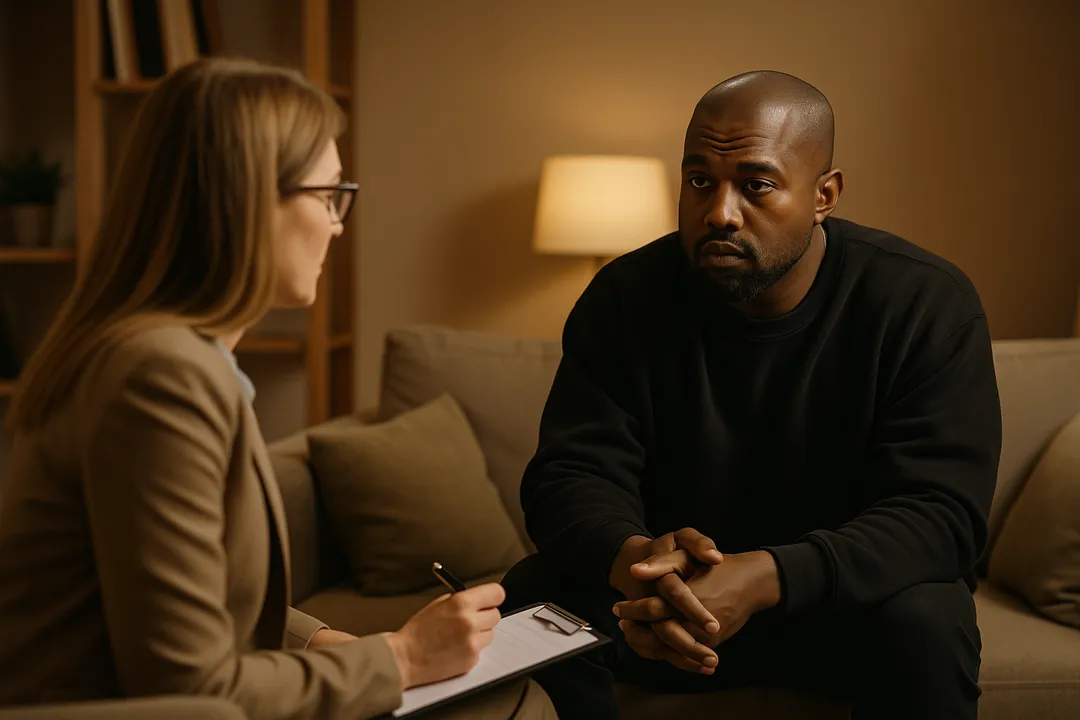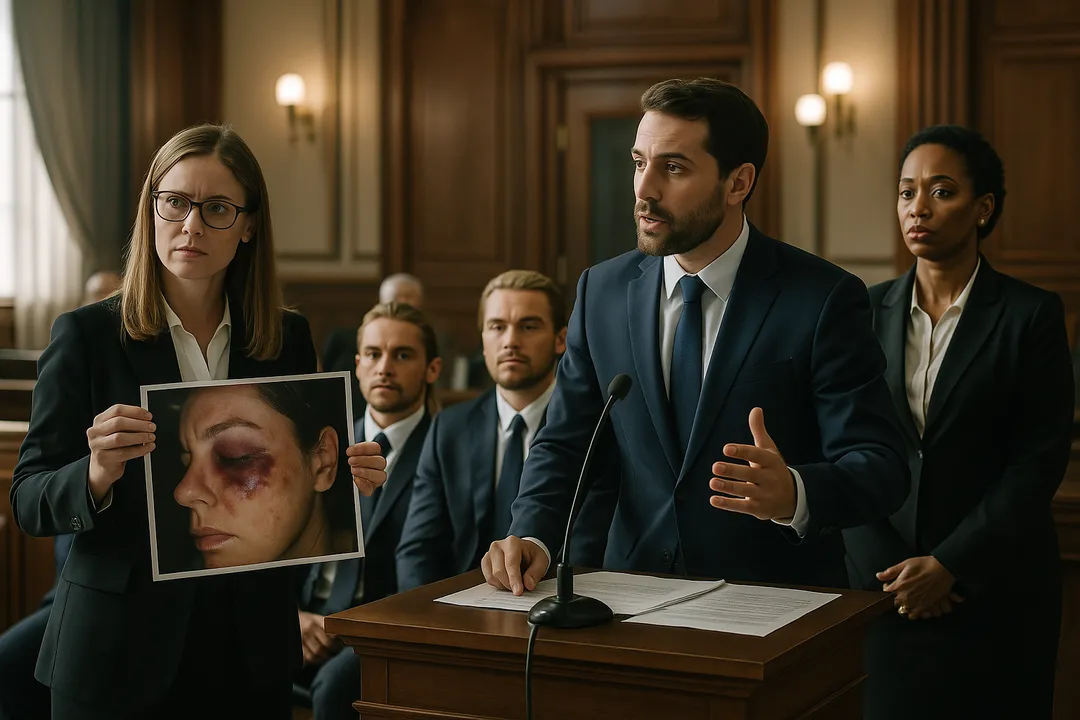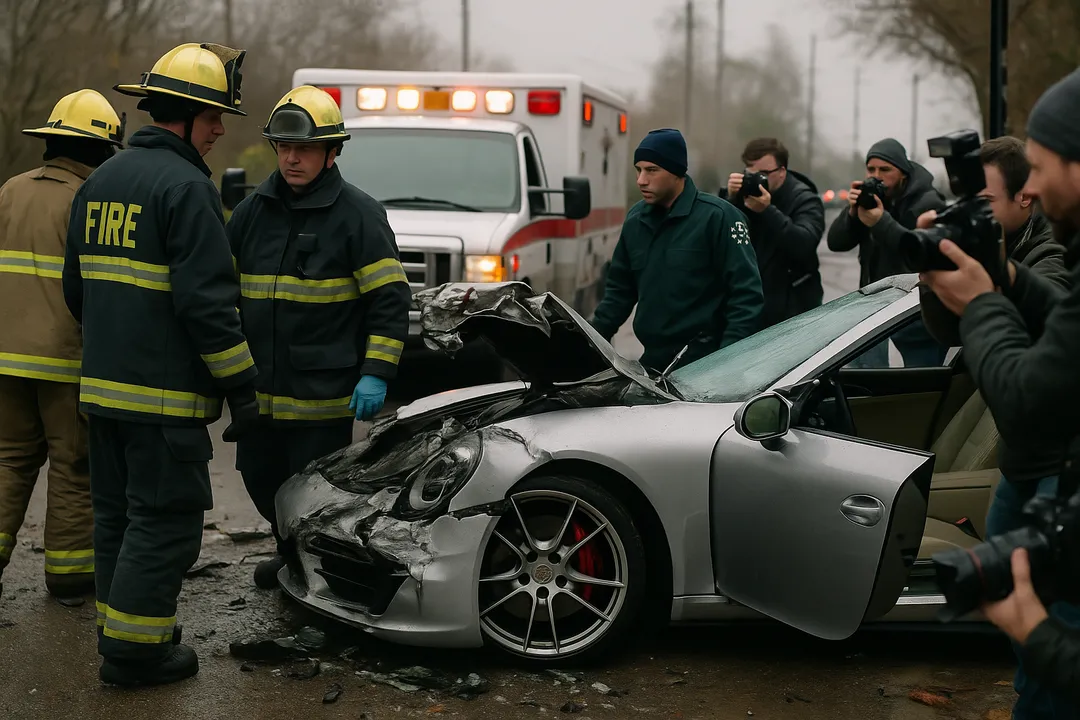In a shocking turn of events that has sent ripples through the entertainment industry, global superstar Jennifer Lopez sustained a facial injury during rehearsals for the 2025 American Music Awards. Despite the injury, the multi-talented performer has demonstrated remarkable resilience by continuing with her hosting duties, raising important questions about celebrity safety protocols and the pressures of live entertainment.
This incident highlights the complex intersection of celebrity culture, performance safety, and legal liability that defines modern entertainment. As we examine the details surrounding Lopez’s injury, we uncover broader implications for how the industry handles performer safety and the legal frameworks that protect—or fail to protect—our biggest stars.
The Incident: What We Know
According to multiple entertainment industry sources, Jennifer Lopez sustained her facial injury during what should have been a routine rehearsal session for the 2025 American Music Awards. The injury occurred while the performer was working through choreographed sequences that would later be performed live on television to millions of viewers worldwide.
The exact nature of the injury has not been fully disclosed, but sources close to the production indicate that it was significant enough to require medical attention. Despite this setback, Lopez made the remarkable decision to continue with her hosting responsibilities, demonstrating the kind of professional dedication that has defined her decades-long career.
This decision to continue performing despite injury raises critical questions about the pressures faced by celebrities in high-stakes entertainment environments. The American Music Awards represent one of the industry’s most prestigious events, with massive financial investments and global audience expectations riding on every performance.
Legal Implications of Celebrity Performance Injuries
When celebrities suffer injuries during professional engagements, the legal landscape becomes immediately complex. As we explored in our previous analysis of how personal injury law applies to public figures, fame doesn’t exempt anyone from injury, but it does fundamentally change how legal proceedings unfold.
In Lopez’s case, several legal considerations come into play. First, there’s the question of workplace safety and whether adequate precautions were taken during rehearsals. Entertainment productions are required to maintain safe working environments, and any failure to do so could result in liability for the production company, venue, or other responsible parties.
The entertainment industry operates under specific safety regulations that govern everything from stage construction to lighting placement. When injuries occur during rehearsals or performances, investigators must determine whether these regulations were followed and whether any negligence contributed to the incident.
Insurance Considerations in High-Profile Cases
Celebrity injuries during major productions inevitably involve complex insurance considerations. As detailed in our comprehensive guide to the role of insurance in high-profile injury cases, entertainment insurance policies are sophisticated instruments designed to protect both performers and production companies.
For an event like the American Music Awards, multiple insurance policies likely come into play. Production insurance covers the event itself, while performer insurance protects individual artists. Additionally, venue insurance and equipment insurance may be relevant depending on the specific circumstances of the injury.
The decision by Lopez to continue hosting despite her injury could have significant insurance implications. Some policies require injured parties to seek immediate medical attention and may limit coverage if performers continue working against medical advice. However, the entertainment industry often includes provisions for performers who choose to continue working despite minor injuries.
The Pressure to Perform: Celebrity Culture and Safety
Lopez’s decision to continue hosting the AMAs despite her facial injury reflects a broader cultural phenomenon in the entertainment industry. The pressure to maintain professional commitments, even in the face of injury, is immense for celebrities who understand that their reputation and future opportunities depend on their reliability.
This pressure creates a complex dynamic where performers may feel compelled to minimize injuries or continue working despite legitimate safety concerns. The financial stakes involved in major productions like the AMAs can reach tens of millions of dollars, creating enormous pressure on all involved parties to proceed as planned.
The entertainment industry has made significant strides in recent years to improve safety protocols and reduce the pressure on performers to work through injuries. However, incidents like Lopez’s injury demonstrate that challenges remain in balancing artistic ambition with performer safety.
Medical Considerations for Facial Injuries
Facial injuries in the entertainment industry carry unique considerations due to the visual nature of celebrity careers. For performers like Lopez, whose image is central to their brand and earning potential, facial injuries can have career implications that extend far beyond the immediate physical impact.
Medical professionals who work with celebrities must consider not only the immediate treatment needs but also the long-term cosmetic and functional outcomes. This often requires specialized care from plastic surgeons, dermatologists, and other specialists who understand the unique demands placed on celebrity appearances.
The decision to continue performing with a facial injury also raises medical questions about proper healing and the risk of complications. Medical professionals typically recommend rest and limited activity following facial trauma to ensure proper healing and minimize scarring.
Industry Safety Standards and Protocols
The entertainment industry has developed comprehensive safety standards over decades of experience with on-set and performance injuries. These standards cover everything from stunt coordination to stage construction, with specific protocols for rehearsals and live performances.
For major events like the American Music Awards, safety protocols typically include pre-production safety meetings, hazard assessments, and the presence of medical personnel during rehearsals and performances. Despite these precautions, injuries can still occur, particularly during complex choreographed sequences or when working with elaborate stage designs.
The investigation into Lopez’s injury will likely examine whether all appropriate safety protocols were followed and whether any additional measures could have prevented the incident. This analysis will be crucial for both legal proceedings and future safety improvements.
Financial Impact and Career Implications
Celebrity injuries can have far-reaching financial implications that extend beyond immediate medical costs. For performers at Lopez’s level, injuries can affect touring schedules, recording sessions, promotional appearances, and endorsement deals.
The entertainment industry has developed sophisticated mechanisms for managing these financial risks, including insurance policies that cover lost income due to injury. However, the calculation of damages in celebrity injury cases can be extremely complex, involving projections of future earnings and career trajectory.
Lopez’s decision to continue with the AMAs hosting duties may help minimize some financial impacts, but the long-term effects of the injury remain to be seen. Facial injuries, in particular, can have lasting implications for performers whose careers depend heavily on their visual appearance.
Precedent Cases in Celebrity Performance Injuries
The entertainment industry has seen numerous high-profile cases of performers injured during rehearsals or performances. These cases have helped establish legal precedents and industry standards for handling such incidents.
Notable examples include performers injured during elaborate stage productions, dancers hurt during complex choreography, and musicians injured by stage equipment. Each case has contributed to the evolving understanding of liability, safety standards, and appropriate responses to celebrity injuries.
These precedent cases often influence how current incidents are handled, both from legal and public relations perspectives. The entertainment industry has learned valuable lessons about the importance of transparency, appropriate medical care, and comprehensive safety protocols.
Public Relations and Media Management
Celebrity injuries inevitably become public relations challenges that require careful management. The way injuries are communicated to the public can significantly impact both the performer’s career and the production company’s reputation.
In Lopez’s case, the decision to continue hosting while injured has been framed as a demonstration of professionalism and dedication. This narrative helps maintain positive public perception while acknowledging the reality of the injury.
Media management in celebrity injury cases must balance transparency with privacy concerns, legal considerations, and career implications. The goal is typically to maintain public support while protecting the performer’s interests and minimizing negative publicity.
Future Implications for Industry Safety
Lopez’s injury and her decision to continue performing will likely influence future discussions about entertainment industry safety standards. The incident provides an opportunity to examine current protocols and consider whether additional measures are needed to protect performers.
Industry organizations, unions, and regulatory bodies may use this case as a catalyst for reviewing and potentially updating safety requirements. The goal is always to prevent injuries while maintaining the creative freedom and artistic ambition that define great entertainment.
The entertainment industry’s response to this incident will be closely watched by performers, production companies, and legal professionals who understand that today’s precedents become tomorrow’s standards.
Conclusion
Jennifer Lopez’s facial injury during 2025 AMAs rehearsals represents more than just an unfortunate accident—it’s a window into the complex world of celebrity safety, legal liability, and industry standards. Her decision to continue hosting despite the injury demonstrates both the pressures and the professionalism that define modern entertainment.
As the entertainment industry continues to evolve, incidents like this serve as important reminders of the need for comprehensive safety protocols, appropriate insurance coverage, and legal frameworks that protect performers while allowing for artistic expression. The lessons learned from Lopez’s experience will undoubtedly influence how similar situations are handled in the future.
For celebrities, production companies, and legal professionals, this case underscores the importance of understanding the complex intersection of performance, safety, and law that defines the modern entertainment landscape.


